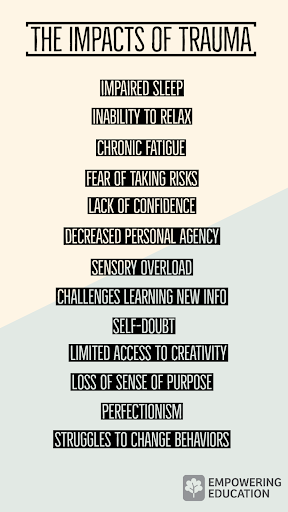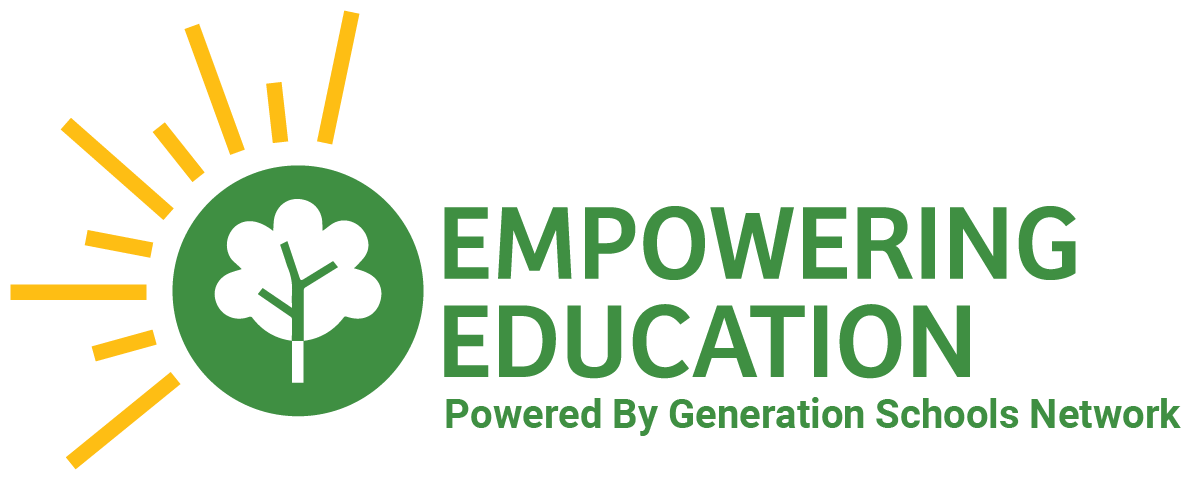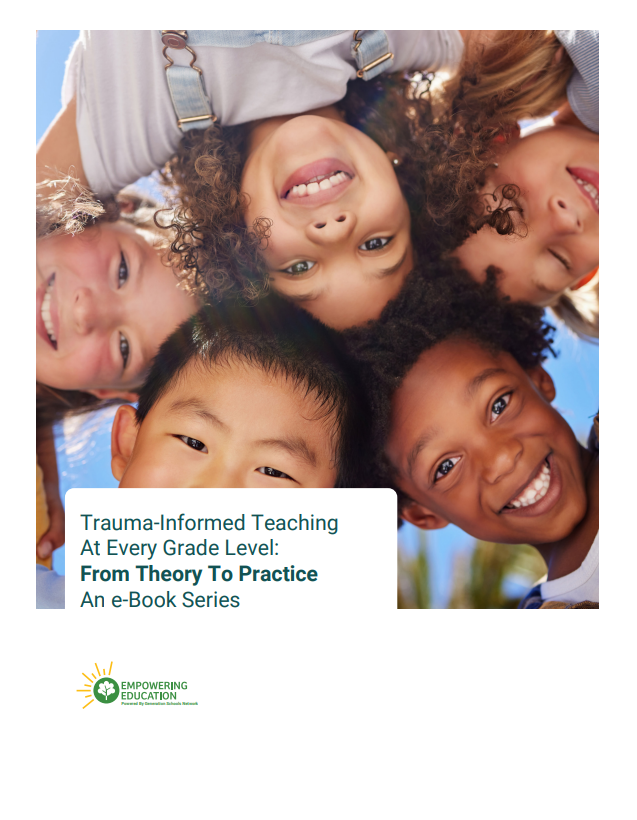How does trauma impact adult learners?
Trauma & PTSD impacts adults and children physically, emotionally, and intellectually. Trauma is the experience of an event that overwhelms our nervous system and that occurs when our ability to protect ourselves fails, and it can have a serious effect on learning. If you're a member, you can view our complete trauma-informed teaching training to learn more about how to use these techniques in the classroom, but below you'll find a brief summary.
The most significant forms of trauma are the ten ACEs (adverse childhood experiences that occur in our first 18 years of life), which often cause chronic PTSD.

More subtly, those impacted by trauma often have learned to track people in authority for subtle cues of anger or disappointment―that heightened awareness is part of how they protected themselves. Those learners then track teachers for those same clues and often over-interpret or misread what they’re seeing. This then leads to those learners getting “activated,” moving up the arousal continuum, changing the sort of thinking (cognition) that can take place:

(Ideas adapted from work by Bruce Perry)
Does trauma & PTSD impact adults?
Trauma impacts adult learners just as it affects young learners That said, educators are more likely to see dramatic effects in children as they are more vulnerable and have had less time to develop coping skills. With adult learners, we’ll see fewer outbursts, but we still see mature students shutting down or being unable to accept criticism, or even praise.
What can teachers do to better teach adults with PTSD or those who are trauma-impacted?
We recommend our complete trauma-informed teaching training to learn more about how trauma effects all learners, but here are a few tips to becoming a trauma-informed teacher of postsecondary students.
1. Become aware of the signs and impact of trauma.
To be responsive to trauma, you need to know how trauma shows up in class and how PTSD impacts learning.
2. Build a classroom culture that is safe through having a firm discipline style, but providing a lot of support.
While “being nice” may seem appropriate to trauma-impacted students, learners with PTSD benefit from more structure.
3. Reduce the frequency of triggers.
For example, avoid references to violence or other triggers—even the word “triggers” can be problematic!
4. Learn how to respond appropriately when students become “activated” (upset or agitated).
Think in advance what to do so that you’re prepared. Usually you begin with validating feelings through paraphrasing and restating.
5. Support struggling learners.
Provide “hurdle help” (I Do, We Do, You Do) to gradually release the cognitive load onto the student.
6. Use your voice.
Avoid yelling, but use both soft and loud voices.
7. Watch your body.
Both proximity and distance can be helpful. Come down to eye level when talking with students. Avoid approaching students from behind.
8. Focus on the positive.
Emphasize student strengths and point out how learners can use them to address their challenges. Provide objective complements (some folks impacted by trauma struggle to receive praise).
9. Validate feelings.
Try paraphrasing back what a student said: “It sounds like you’re finding this work really tough.”
Have a question or idea about working with trauma-impacted adults? Drop a comment by sending an email.


